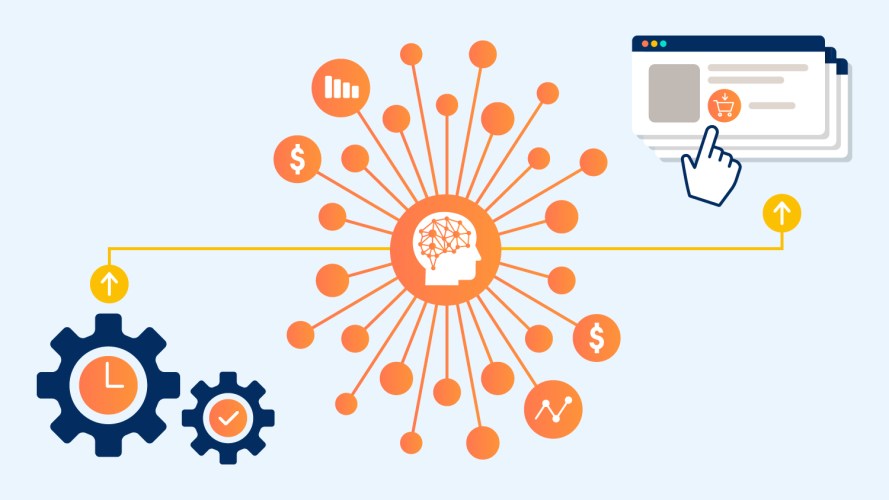Boost Media Ad Sales With Centralized Data Management and AI

How to leverage technology to sell ads faster, cheaper, and more consistently.

Trevor Opris
Media ad sales have evolved considerably in recent decades, and more changes are happening every day. Gone are the days when you would sell time slots during primetime TV or a half-page ad in a newspaper or magazine and call it a day. New types of ads are now available. This includes highly targeted digital ads, sponsored products on ecommerce sites, and new out-of-the-home (OOTH) options such as video displays at the gas pump.
Ad buyers have never had more options for spending their ad dollars. Traditional media companies like broadcasters and publishers now have to compete with new entrants from outside the traditional media landscape. This includes tech, retail, and even transportation companies such as Uber.
These new entrants often utilize modern technology stacks, making their sales processes faster, more transparent, and cheaper than traditional media companies. To compete, traditional media companies need to modernize their own systems to offer comparable capabilities.
Your entire sales process can live within a single system
Ad sellers can outperform their competitors by offering top-notch products and services that are underpinned with a modern, AI-powered and integrated process. Managing the entire lifecycle through integrated systems will help overcome the fragmented nature of ad sales and keep up with the ever-changing landscape by improving customer service, boosting efficiency, and optimizing customer results.
But many companies struggle with where to start. First, you need visibility into your data, and that requires bringing as much of the ad sales process as possible onto one platform, and integrating with the other specialized systems — such as ad servers.
For starters, it can be difficult to know how much a brand or agency is spending with you. An ad seller might be working with multiple agencies across different regions that represent a single buyer. When you don’t have a clear picture of what buyers are spending with you, it’s harder to upsell or cross-sell your offerings. By building a framework that tracks ad spending back to brands and agencies, the ad seller is able to obtain a complete view of the customer to create customized media plans that take into account their history and needs.
At different points in the ad sales process, various specialists touch the deal. Sellers answer the request for proposal (RFP), create a draft media plan, quote the cost of the campaign, and submit a contract to the buyer for signature. Then, the ad operations teams need to track billing and create an Insertion Order (IO) within the ad server.
Often, these teams use different tools, and the only integration between these tools is a human copying and pasting, or rekeying the data. This is jokingly referred to as “swivel-chair” integration. Through the process, the same data points may have been re-typed a number of times, and now carry the risk of errors and gaps, not to mention the wasted resources that go into manual entry.
You can reduce these manual efforts and “swivel-chair” processes by incorporating as many of the tools to help build the framework for the ad sales process onto a single platform as possible. That way, both the ad sales and ops teams are working from the same data, in the same way.
Optimize ad sales for your streaming service
Scaling advertising in streaming is easier said than done. Here’s how data and AI can help you keep up.



AI can increase revenue while reducing costs, but it all starts with data
With the explosive growth and transformative potential of generative AI, media companies are eager to use it for everything from writing copy, creating media plans, and building new ways to improve customer service. But your AI aspirations are only as strong as your data. AI models can only predict outcomes and generate suggestions if they have comprehensive, accurate, and timely data to draw from – underpinned with a trust layer that keeps it secure and ensures privacy.
A single source of truth for media ad sales data will allow you to integrate data from different sources and standardize it to ensure consistency and integrity, all accessible on a CRM platform that gives you and your AI model a comprehensive view of your customers and their ad spend.
AI models can be run on both structured and unstructured data to provide teams with recommendations that boost efficiency, reduce errors, and scale personalization. This helps ad sales teams with everything from lead generation and relationship building to writing personal client emails, summarizing sales calls, and generating talking points.
From selling to analytics, AI is a powerful tool for ad sales
One of the biggest benefits of an AI-powered, integrated system is the pure speed of doing business. Large language models (LLMs) allow you to efficiently access insights that are drawn from real-time performance data and historical company knowledge. Users can access this information through natural questions such as, “Show me how much ‘Agency A’ spent with us last year?” or “What were the results of ‘Campaign B?’”
Performance insights can then be shared in real time with the ad buyer through self-service analytics portals, along with AI-powered recommendations, giving them the chance to tweak campaigns mid-stream to make them more effective. Ad buyers can also use analytics to view impressions and see the return on their investment in real time.
Ad buyers want to work with companies that make their lives easier. By providing transparency and actionable, timely insights, ad sellers can differentiate themselves from the competition.
To stand out in today’s competitive media ad sales landscape, sellers need to provide customers with a top-notch experience powered by integrated data and AI. Companies that fail to do so will be outperformed by those who take advantage of these powerful technologies.
Say hello to Einstein Copilot
Your trusted conversational AI assistant for CRM gives everyone the power to get work done faster. It’s a total game-changer for your company.

























